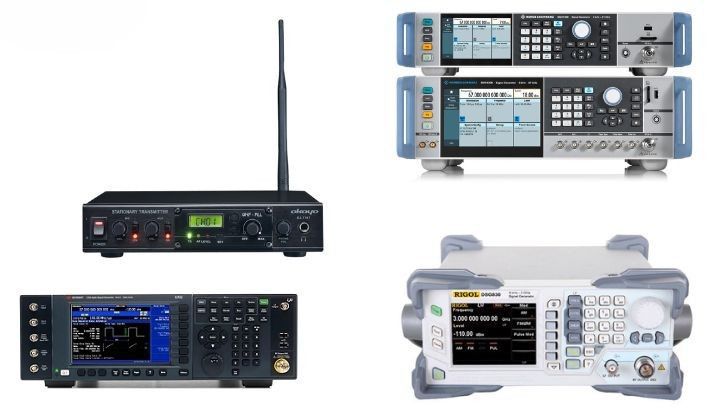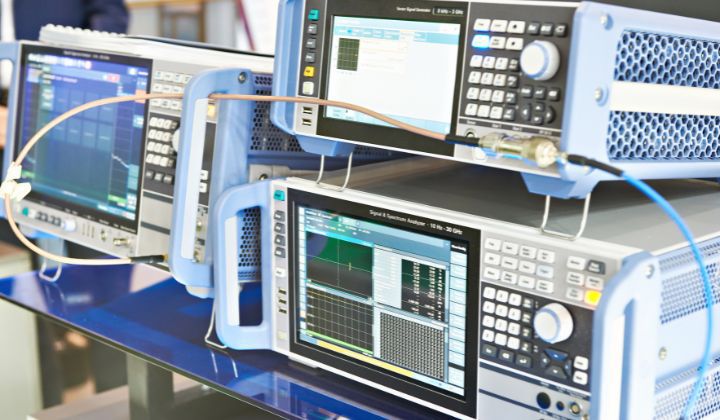What is a signal generator and why is it almost always present in the lab?
When testing audio equipment, calibrating sensors or conducting technical research, signal generators are always the preferred tool to ensure accurate output results. In this article, EMIN will help you learn more about this device, from popular models, typical functions to the scope of application in many modern industries.
Contents
Learn about detector signals?
A signal generator is a device that generates electrical signals with different frequencies, amplitudes, and waveforms. This device is often used in testing, developing, or debugging electronic circuits and devices. Basically, a signal generator allows the creation of simulated signals similar to real signals to test the response of electronic components or systems.

Thanks to that, engineers can easily evaluate the operation of the device, detect technical problems if any, and make timely adjustments during the design or maintenance process. This is one of the familiar tools for anyone working in the field of electronics or communications.
Outstanding features of the signal generator
Signal generators are designed to produce electrical signals with clear and easily adjustable waveforms, which are very useful for circuit testing and device testing. Here are some important features that you can easily find on most of today's models.
First of all, the ability to operate over a very wide frequency range, from a few kilohertz to gigahertz. This allows the device to be used for a variety of different applications, from audio testing to simulating high-frequency telecommunication signals.
The meter also supports a variety of waveforms, such as sine waves, square waves, triangle waves, or pulses. Each of these waveforms is suitable for different purposes, for example, square waves are often used to test digital circuits.
Another advantage is the ability to flexibly adjust the signal amplitude. This feature allows engineers to test equipment under different signal levels to see how the equipment responds, whether it is sensitive, or whether the signal is distorted.
In addition, many modern signal generators have built-in modulation modes such as amplitude modulation or frequency modulation. This is useful when simulating real-world situations in communications systems or radar equipment.
Popular types of signal generators today
There are many types of signal generators on the market, each designed to serve a specific purpose. Once you understand the differences between each type, it will be easier for you to choose the right device for your actual needs.
One of the most popular types is the function generator. This device is capable of generating basic waveforms such as sine, square or triangle. Because of its simple design, reasonable price and ease of use, function generators are often used in labs to test circuits or handle basic errors. This is a suitable choice when you do not need a very high level of accuracy.
For applications involving high-frequency signals, RF signal generators are an indispensable choice. These devices can generate signals from several megahertz to several gigahertz, making them ideal for testing telecommunications equipment, Wi-Fi, or radar systems. Because they can accurately simulate wireless signals, RF generators play an important role in testing mobile devices and radio wave applications.
In the audio field, audio signal generators are designed to generate signals in the frequency range of 20 Hz to 20 kHz. These devices are often used to test speakers, microphones, or amplifiers, helping technicians evaluate the quality of the output sound and detect problems with noise or signal distortion.
Finally, there is the pulse generator, which produces short pulses of signal instead of a continuous signal. This is a familiar tool in digital circuit testing or radar applications. Users can adjust many parameters such as pulse width, time interval between pulses, and delay to serve specific measurement purposes.
Common applications of signal generators
Signal generators are familiar devices in many technical fields thanks to their ability to simulate signals similar to those in real environments. Depending on the type of work, this device will play different roles, from simple testing to in-depth research.

Support for testing and calibration of electronic equipment
Signal generators are often used to generate signals that are similar to those that a device will encounter during actual operation. For example, when testing a radio receiver, an RF signal generator will generate a signal at the frequency being tested to see if the device is operating properly. This allows the technician to make more accurate assessments and adjustments before putting it into use.
Contribute to product research and development
For R&D teams, signal generators are an indispensable tool. Machines like the AWG allow for the creation of custom waveforms for specific needs. This is useful when simulating complex real-world situations, such as testing car audio systems or evaluating the response of circuits under unstable conditions.
Used in testing telecommunications and wireless equipment
In the telecommunications field, RF signal generators are used to simulate the signals that devices such as phones, Wi-Fi transmitters or other communication devices will encounter. This helps ensure that the device can operate stably, receive good signals and not have errors when operating in real environments.
Applications in audio equipment testing
With audio devices such as speakers, microphones or amplifiers, signal generators help technicians generate audio frequency signals to test the output quality. This helps evaluate the frequency response, distortion and fidelity of the audio device, thereby making appropriate adjustments to improve the quality of the performance or recording.
See more related articles: Getting familiar with how to measure inductance with waveforms and signal generators?
